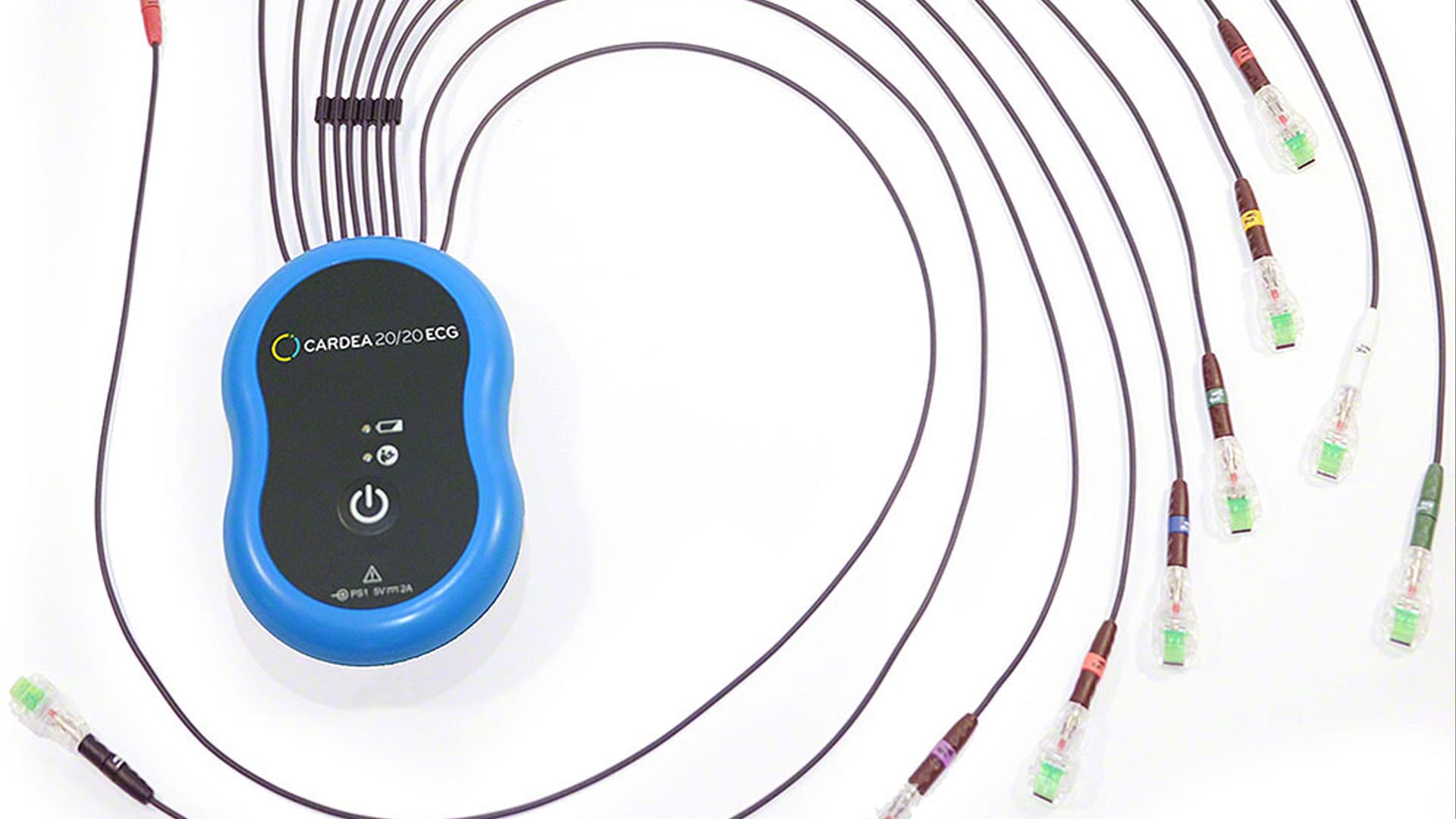Among the many challenges facing today’s healthcare system, early detection in real time ranks near the top of the list.1 The standard snapshot approach with measurements at a single or few points in time, often fails to capture the full dynamic picture of disease progression in each individual, causing healthcare providers to reactively — not proactively — treat patients. Personalized medicine opens the door to tailored interventions that more effectively target, prevent, and treat potentially life-altering cardiac conditions.
The Need for Personalization in Atrial Fibrillation Diagnostics
For cardiology providers, integrating personalized strategies into atrial fibrillation (AFib) diagnostics and treatment could significantly improve outcomes. Treating AFib before it progresses to a more sustained form of the disease can prevent life-threatening complications, including thromboembolism and ischemic stroke. AFib patients face a ~5-7% annual risk of ischemic stroke, depending on age, sex and concomitant disease. However, in certain groups, the risk can approach 20%.2
Identifying risk factors and critical inflection points in AFib progression enables earlier and more effective interventions. The most prominent AFib progression indicators include body mass index, heart rate, age, systolic blood pressure, history of hyperthyroidism, stroke, and heart failure.3 However, as each patient has a unique risk factor profile, risk factor management needs to be patient-centered and tailored to patient’s individual needs.4
A Solution to Bolster Personalized Cardiac Care
This challenge is further complicated by industry-standard techniques for monitoring and diagnosing AFib. For decades, short-term (24- to 48-hour) cardiac monitoring has long been the go-to for arrhythmia detection.5 However, AFib episodes are well-understood to be spontaneous and transient in nature.6 With long-term prescription wearable technology, providers can capture a fuller picture of each patient’s AFib status and assess how individual risk factors impact disease progression.
One study evaluating the efficacy of long-term electrocardiogram (ECG) monitoring (13-day mean device wear time) for previously undiagnosed AFib found arrhythmias (≥ 8 consecutive beats) in 48% of subjects.7 Moreover, 35% of subjects experienced their first non-AFib arrhythmia episode after 48 hours.8 The study selected participants on the basis of risk factors only, but found atrial tachycardia (AT) in 67% (≥4 beats), 44% (≥8 beats), and 6.7% (≥60 seconds) of subjects.9 These results speak to the importance of long-term cardiac monitoring in tracking AFib disease progression, even in subclinical cases.
Cardiac Insight’s Cardea SOLO™ ECG System empowers early arrhythmia detection that can lead to improved diagnostic accuracy after seven days of ambulatory monitoring. Once the monitoring period is complete and the data downloaded in-office, providers have immediate access to review the comprehensive analysis report of heart rhythms using Cardiac Insight’s proprietary software. By extending the monitoring period beyond the standard 24-48 hours and enabling rapid in-house point-of-care rhythm analysis, Cardea SOLO makes it easier than ever to identify AFib before patients progress to a more serious form of the disease.
Sources:
1. Tyler J, Choi SW, Tewari M. Real-time, personalized medicine through wearable sensors and dynamic predictive modeling: a new paradigm for clinical medicine. Curr Opin Syst Biol. 2021 Apr 1;20:17-25. doi: 10.1016/j.coisb.2020.07.001. PMID: 32984661; PMCID: PMC7515448.
2. Friberg L, Hammar N, Ringh M, et al. Stroke prophylaxis in atrial fibrillation: who gets it and who does not? Report from the Stockholm Cohort-study on Atrial Fibrillation (SCAF-study). Eur Heart J. 2006;27(16):1954–1964.
3. Blum S, Aeschbacher S, Meyre P, et al. Incidence and Predictors of Atrial Fibrillation Progression. J Am Heart Assoc. 2019;8(20):e012554. doi:10.1161/JAHA.119.012554. PMID: 31590581; PMCID: PMC6818023.
4. Brandes A, Smit MD, Nguyen BO, Rienstra M, Van Gelder IC. Risk Factor Management in Atrial Fibrillation. Arrhythm Electrophysiol Rev. 2018;7(2):118-127. doi:10.15420/aer.2018.18.2. PMID: 29967684; PMCID: PMC6020195.
5. Sana F, Isselbacher EM, Singh JP, Heist EK, Pathik B, Armoundas AA. Wearable Devices for Ambulatory Cardiac Monitoring: JACC State-of-the-Art Review. J Am Coll Cardiol. 2020;75(13):1582-1592. doi:10.1016/j.jacc.2020.01.046. PMID: 32241375; PMCID: PMC7316129.
6. Brundel BJJM, Ai X, Hills MT, Kuipers MF, Lip GYH, de Groot NMS. Atrial fibrillation. Nat Rev Dis Primers. 2022;8(1):21. Published 2022 Apr 7. doi:10.1038/s41572-022-00347-9. PMID: 35393446.
7. Turakhia MP, Ullal AJ, Hoang DD, et al. Feasibility of extended ambulatory electrocardiogram monitoring to identify silent atrial fibrillation in high-risk patients: the Screening Study for Undiagnosed Atrial Fibrillation (STUDY-AF). Clin Cardiol. 2015;38(5):285-292. doi:10.1002/clc.22387. PMID: 25873476; PMCID: PMC4654330.
8. Ibid.
9. Ibid.



